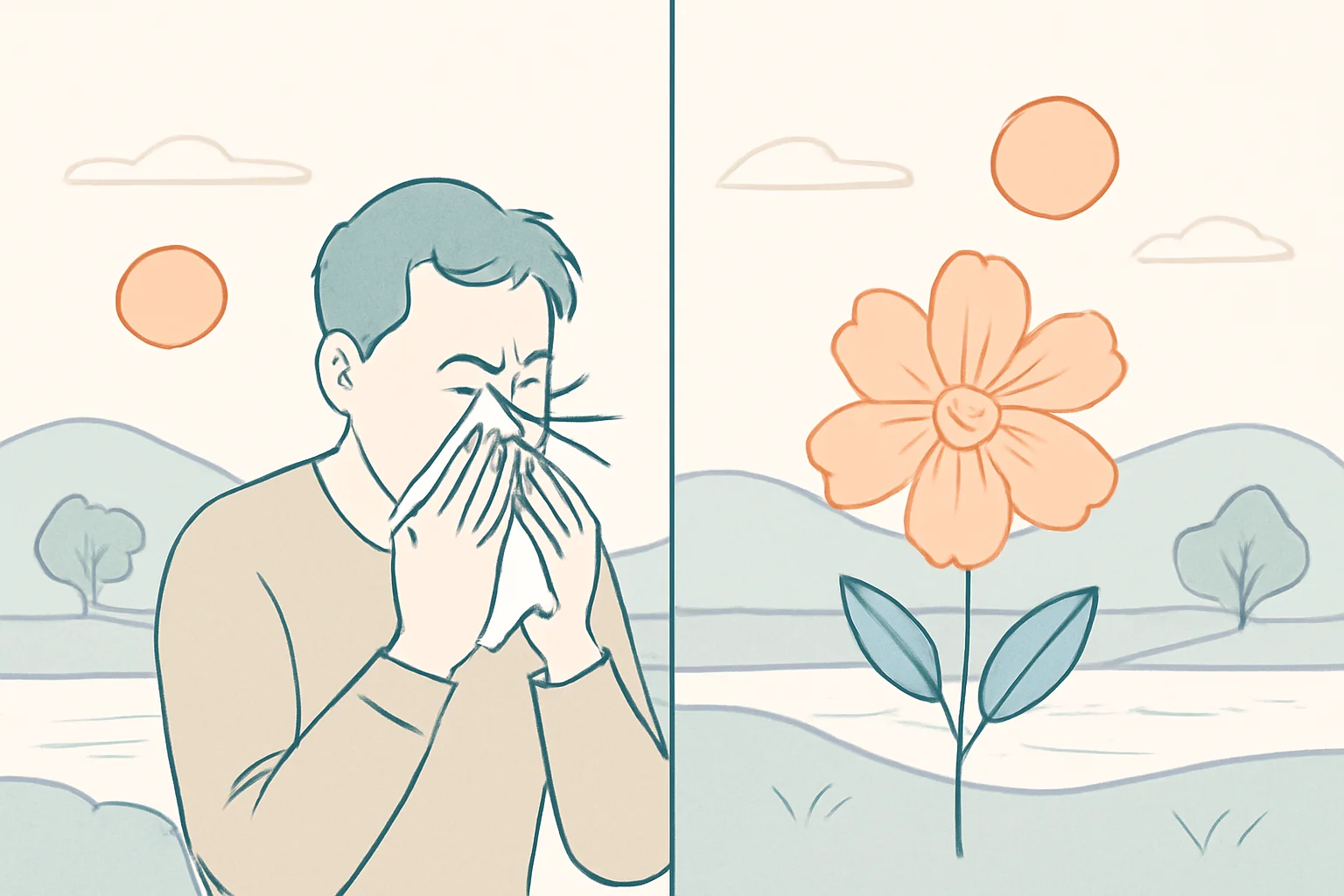
Cold or Allergy? How to Easily Distinguish Between Them!
The common cold and allergies are two conditions that affect many people’s lives, especially during the spring and autumn months. Although the two phenomena may seem similar, they actually arise from different causes and present different symptoms. The common cold, which is most often caused by viruses, typically starts suddenly, with symptoms including nasal congestion, sneezing, and a sore throat. In contrast, allergies, triggered by the immune system’s response to various allergens, are usually seasonal, and symptoms such as itchy eyes and skin rashes can persist as long as the person is exposed to the allergen.
Understanding the difference between the two conditions is essential, as the treatment methods and prevention strategies may vary. The common cold usually resolves on its own, while treating allergic reactions often requires a longer-term approach, such as avoiding allergens or using antihistamines. People often confuse the two conditions, which complicates not only their treatment but also their daily lives.
Distinguishing between the common cold and allergies is a crucial step in finding the right treatment. In the following sections, we will take a closer look at the common cold and allergies, their symptoms, causes, and treatment options, to better understand these two conditions.
Common Cold: Symptoms and Causes
The common cold is a viral infection that attacks the respiratory tract and is most commonly spread during the autumn and winter months. Among the viruses that cause the common cold, the rhinovirus is the most well-known, but several other viruses, such as adenoviruses or coronaviruses, can also be responsible for the illness. The common cold typically spreads through droplet transmission, meaning that the virus is released into the air through the cough or sneeze of an infected person, and others can catch it.
The symptoms of the common cold usually present as follows: nasal congestion, runny nose, sneezing, sore throat, cough, and sometimes a mild fever. Symptoms generally resolve on their own within 1-2 weeks, as the body’s immune system is capable of overcoming the virus. During a cold, the most important thing is rest and hydration, as these can aid in recovery.
To prevent the common cold, regular handwashing is essential, especially in public places where many people gather. Additionally, it is advisable to avoid direct contact with sick individuals and, if possible, to steer clear of crowded places, particularly during cold seasons. A healthy lifestyle, including proper nutrition and regular exercise, can also contribute to resistance against the common cold.
In many cases, the symptoms of the common cold can be easily managed with home remedies, such as honey tea, steam inhalation, or nasal sprays. If symptoms worsen or if the cold persists, it is advisable to consult a doctor to rule out more serious health issues.
Allergies: Symptoms and Causes
Allergies are an excessive reaction of the immune system to various allergens, such as pollen, dust, pet dander, or certain foods. Allergic reactions encompass a wide range of symptoms, which can vary from itchy eyes and runny nose to breathing difficulties. Allergies are typically seasonal; for example, pollen allergies occur in the spring and summer months, while dust mite allergies can be a problem year-round.
The triggers for allergic reactions are diverse. The most common allergens include pollens released into the air during the flowering of trees, grasses, and flowers. Allergies to dust mites, pet dander, and molds are also prevalent. Allergic reactions generally occur due to the hypersensitivity of the immune system, which perceives normally harmless substances as dangerous.
Treating allergic symptoms often involves the use of antihistamines, immunotherapy, or avoidance strategies. Antihistamines help reduce inflammation and itching, while immunotherapy aims to gradually desensitize the immune system to allergens, thereby reducing the intensity of reactions.
Prevention plays a key role in managing allergic symptoms. Individuals with allergies should pay attention to pollen reports and stay indoors on days with high pollen counts. Keeping the home clean, using humidifiers, and regularly cleaning carpets and curtains can also help reduce symptoms related to dust and pollen allergies.
Distinguishing Between the Common Cold and Allergies
Distinguishing the symptoms of the common cold from those of allergies can often be challenging, as some symptoms may overlap. Both conditions can present with a runny nose, sneezing, and coughing; however, the underlying causes and duration of symptoms differ.
The symptoms of the common cold typically start suddenly and peak within a few days, while allergic reactions may also begin suddenly but can persist for a longer time as long as the individual is exposed to the allergen. Fever and sore throat are common in the case of a cold, whereas these symptoms are less frequently associated with allergies.
To establish a diagnosis, it is important to closely observe the symptoms and seek medical assistance if necessary. Allergists can determine what allergens a person is sensitive to through various tests, such as skin tests or blood tests.
For appropriate treatment, an accurate diagnosis is essential, as the treatment methods for the common cold and allergies differ. While the common cold usually resolves on its own, allergic reactions often require long-term treatment solutions.
Understanding the common cold and allergies, as well as correctly identifying symptoms, can aid in selecting the right treatment, improving quality of life, and reducing discomfort.
Warning: This article does not constitute medical advice, and individuals should always consult their doctor for health issues.

